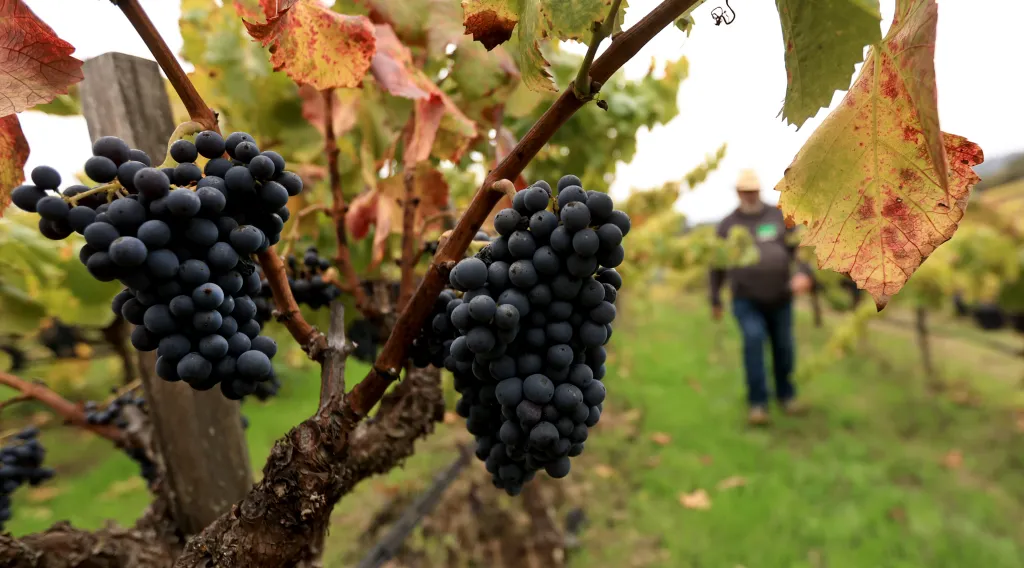Copyright Santa Rosa Press Democrat

Dave Massoni is leaving town. More than 150 years after his family began farming in Healdsburg, the 66-year-old winegrower is getting out of the business and moving to Nevada. “I’ve been farming grapes since I was 18 and this is the worst year I’ve ever seen,” said Massoni, owner of Massoni Ranch in Healdsburg. “I have beautiful fruit just hanging on the vine and I can’t sell it. I had prospective buyers, but they all went silent.” Massoni is not alone. Jeff Bitter, a wine industry analyst and president of Allied Grape Growers in Healdsburg, predicts 2025 could be California’s smallest grape crush in 30 years. In response to the sluggish wine market, many wine producers are scaling back production, leaving countless growers stranded with unsold fruit. California produces nearly 3 million tons of wine grapes each year, but Bitter speculates nearly a half-million tons will go uncrushed this harvest. “We knew this was going to be a pretty painful harvest for most growers … We just didn’t know how bad it was going to hurt,” said Bitter in a post-harvest press conference with the California Association of Winegrape Growers on Nov. 5. “A lot of buyers asked to be let out of their contracts for fear of being unable to pay for the grapes.” Massoni, who grows Chardonnay in the Russian River Valley and Pinot Noir in Dry Creek Valley, has sold grapes to Constellation Brands for 20 years. But that ended this year when the company cancelled its contract. “I ended up pulling out half my Pinot Noir vines because it was cheaper than farming them all season and paying $15,000 in crop insurance,” he said. “You can’t pay your bills with the cost of farming, and I imagine next season will be even worse.” Tough times continue for winegrowers Bitter points to two primary dynamics affecting the grape market: a surplus of grapevines and an oversupply of wine in tank, in bottle and on store shelves. A decline in alcohol consumption is partly to blame, a decrease linked to numerous health advisories on the potentially harmful effects of even moderate drinking. According to Gallup’s annual Consumption Habits survey, the percentage of U.S. adults consuming alcohol has fallen to 54% – a record low since Gallup began tracking drinking behavior in 1939. For those who do drink alcohol, only 29% of consumers prefer wine. To balance supply and demand, Bitter urged growers to remove 50,000 grape-bearing acres across the state last year, including a total of 5,000 in Sonoma and Napa counties. A new report commissioned by the California Association of Winegrape Growers estimates 38,000 bearing acres were removed between Oct. 1, 2024, and Aug. 1, 2025, with 2,700 acres pulled in Sonoma County and 3,100 in Napa County. While the numbers suggest growers are on the right track, it’s difficult to determine how many of the removed acres are simply being replanted. At Sangiacomo Family Vineyards in Sonoma Valley, about 50 acres of older, less-productive vines are replaced each year. Farmers in Sonoma County for nearly a century, the family grows about 1,500 acres of Chardonnay and Pinot Noir. But like many winegrowers this year, they were faced with unsold fruit. “On the bright side, the quality of this year’s fruit is outstanding,” said Steve Sangiacomo, a third-generation partner. “Unfortunately, about 10% of our fruit went unsold to longtime buyers. We’re in an unprecedented cycle, but are trying to stay optimistic.” It was a similar story at Serres Ranch in Sonoma Valley, where Taylor Serres’ family has been farming for a century and growing grapes since the 1970s. Over the years, the Serres have strategically diversified their business to survive, farming blueberries, cattle and row crops and launching a wine label. This year, about 10% of their grapes went unsold. Serres acknowledges the company is in a better place than many other local growers this harvest. Still, she expects they’ll have to tighten their belts to make up for the lost revenue. “We’re going to try to cut costs where we can while balancing the needs of our workers and families,” she said. “Farming is not for the faint of heart, and these are tough times. We’re trying to remain hopeful things will turn around.” Ryan Petersen, owner of Petersen Land Management in Geyserville, would have been thrilled to sell 90% of the grapes grown on the 250 acres he manages in Sonoma County. Unfortunately, he wasn’t so lucky. All of his long-term clients cancelled their contracts this year, leaving 75% of the fruit unsold. Some Central Valley-based wine companies, like Bogle and Bronco, purchased high-quality Sonoma County fruit this year because the prices were so low, he said. Their hope is to build relationships with local growers to carry them into next year. “My great-grandfather began farming in Dry Creek Valley in the 1900s, so I’m doing everything I can to survive,” said Petersen. “Maybe it will stabilize next year – maybe the year after. In the meantime, we’re producing the best quality fruit we can, so when the market turns around, our clients will come back.”



